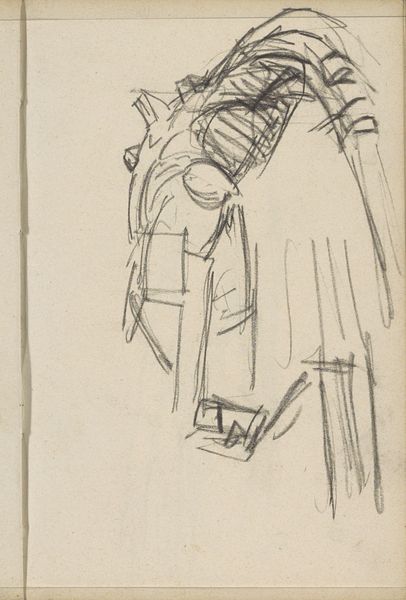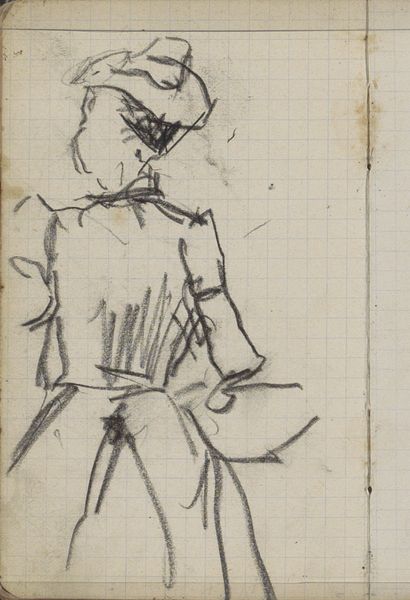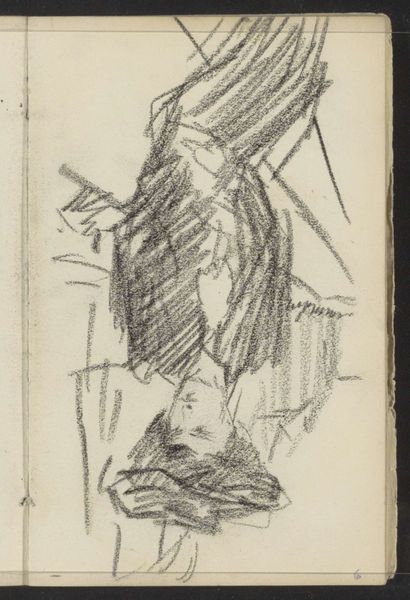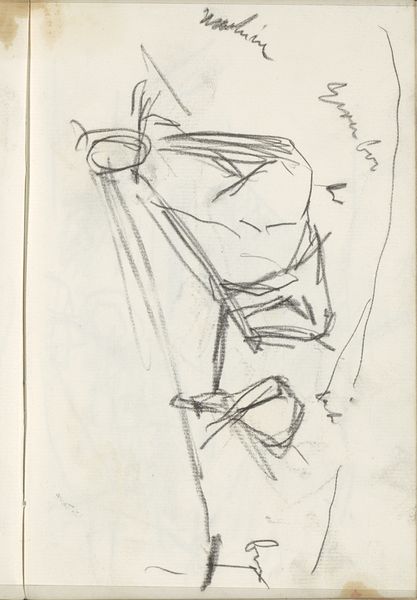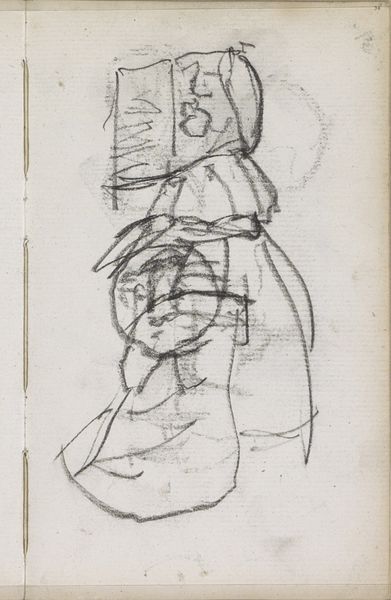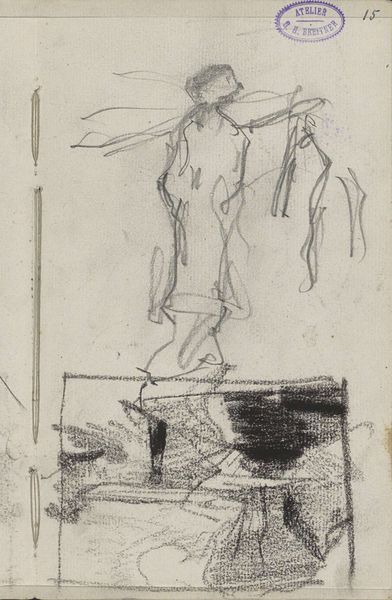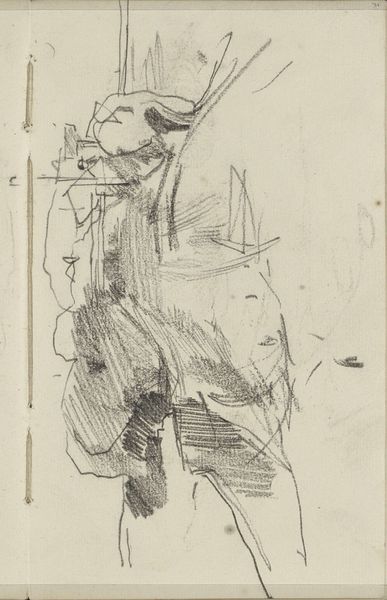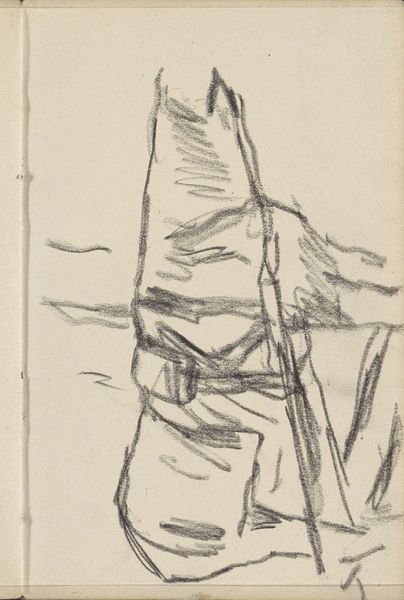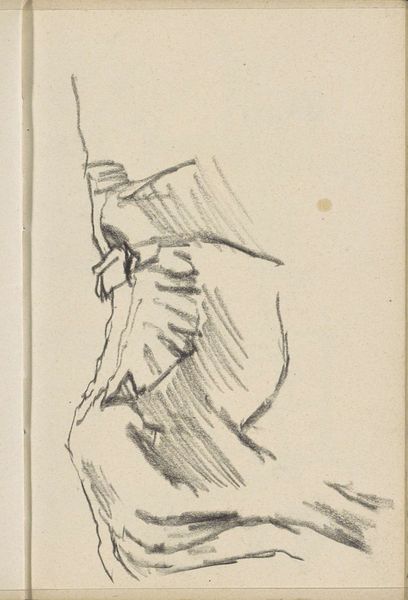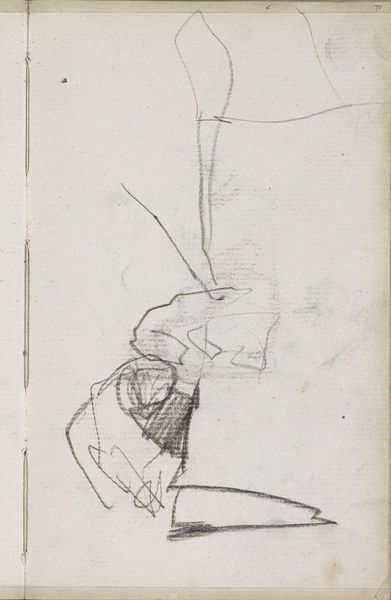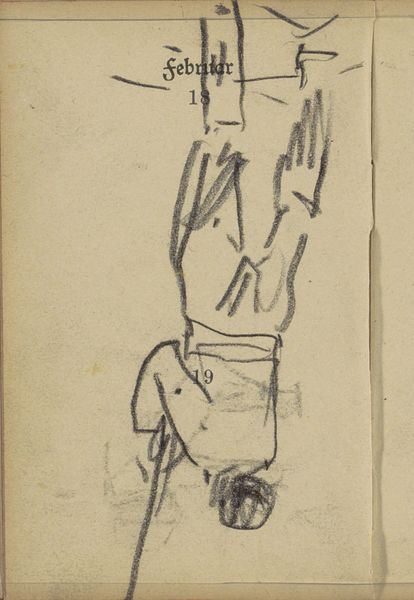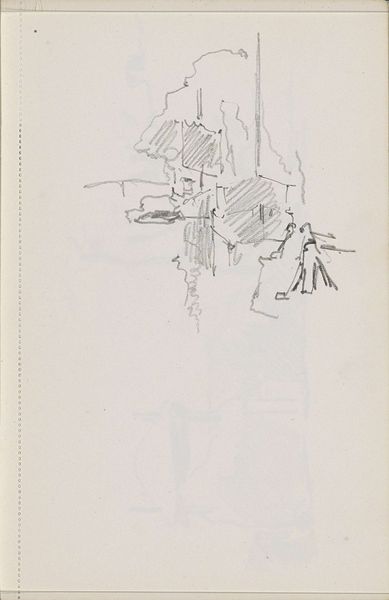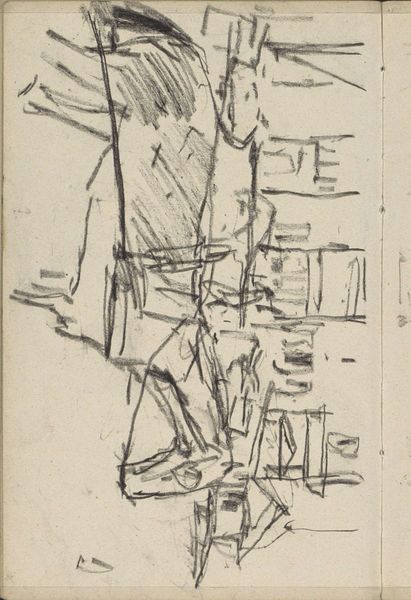
Copyright: Rijks Museum: Open Domain
Editor: This spirited graphite drawing, "Paardenkar of paard en wagen"—Horse Cart or Horse and Wagon—by George Hendrik Breitner, from around 1910, feels like a fleeting glimpse, almost like a memory fading at the edges. The horses and the cart, they’re there, but dissolving. What do you see in it? Curator: Oh, it's pure poetry in motion! To me, this drawing is like capturing a snippet of a dream. The loose lines, the unfinished quality—it’s as if Breitner wanted to freeze a single moment in time, not the entire journey. Do you notice how the horse and wagon seem to emerge from a hazy background? It feels like a snapshot from a moving vehicle. Editor: It does feel very immediate! Like a quick sketch he jotted down on the go. Curator: Precisely! Breitner was known for his street scenes. He embraced the hustle and bustle of city life. He almost acts like a 19th-century street photographer, capturing life candidly. These are his "instant pictures", his raw impressions of modern life in Amsterdam. What do you think that rawness adds? Editor: It gives it a very authentic feel, rather than something staged or idealized. I definitely see what you mean by "instant picture" – almost like an Instagram of its time. Curator: Exactly. This piece is far more than just a drawing of a horse and cart. It's a portal into Breitner's world. He really just evokes so much atmosphere with such simple means. It encourages me to observe and to experience even a familiar setting in a totally different light. Editor: I see it now; this piece taught me to appreciate the beauty in simple and fleeting moments. It makes me feel more observant. Curator: Absolutely, capturing a fleeting emotion of real time, this is, in fact, what really defines Breitner's drawings and what still intrigues us about them today.
Comments
No comments
Be the first to comment and join the conversation on the ultimate creative platform.
